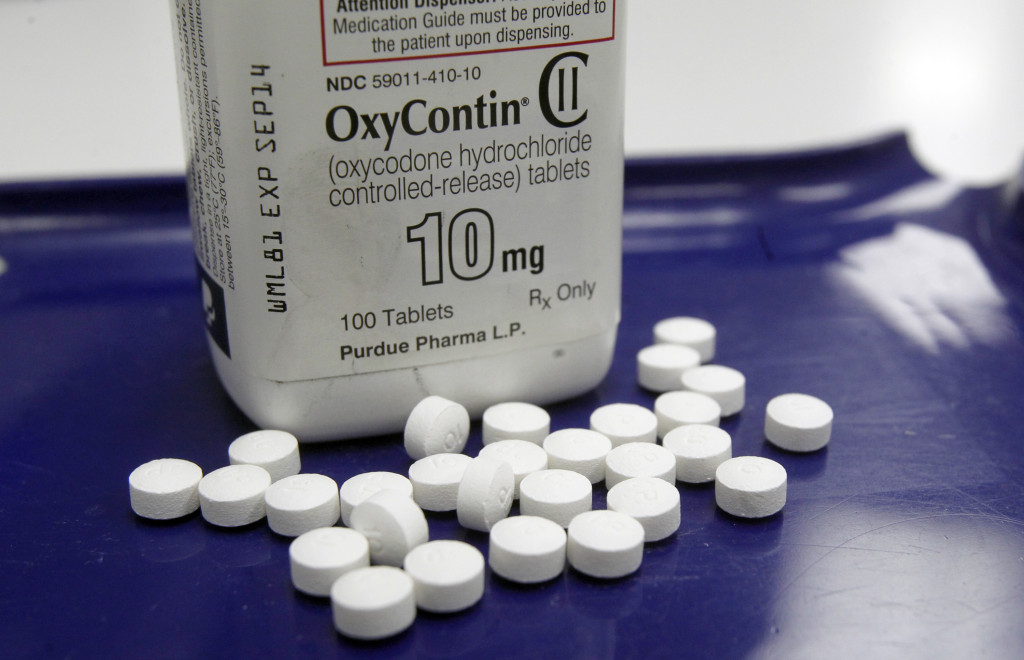Dr. Weeks’ Comments: Pain not only hurts, but also is dispiriting and depressing. Pain also remains nebulous in its nature and etiology: the same painful stimulus elicits different degrees and intensities of pain in different people depending upon various factors. That said, 133 million Americans are on pain meds and few are pleased with the results. Many well intended doctors have been sanctioned unjustly for their compassionate care of those suffering with pain and everyone seeks more “centisble” pain relief options: safer, more effective and more cost effective. Lifestyle factors such as changing the diet (anti-inflammatory diet) and eating organic non-GMO cold pressed anti-inflammatory seeds can be very helpful in reducing pain and lessening the dosage of pain medications – a worthy goal which ANY paid doctor would applaud.
Doctors who are the most prolific prescribers of powerful narcotic painkillers and stimulants often have worrisome records, according to a ProPublica analysis of Medicare data. VPC
Doctors who are the most prolific prescribers of powerful narcotic painkillers and stimulants often have worrisome records, a ProPublica analysis of Medicare data shows.
In 2012, 12 of Medicare’s top 20 prescribers of drugs such as oxycodone, fentanyl, morphine and Ritalin have faced disciplinary actions by their state medical boards or criminal charges related to their medical practices, and another had documents seized from his office by federal agents. These drugs have a high potential for abuse and are classified as Schedule 2 controlled substances by the Drug Enforcement Administration.
The No. 1 prescriber Shelinder Aggarwal of Huntsville, Ala., with more than 14,000 Schedule 2 prescriptions in 2012 ”” had his controlled-substances certificate suspended by the state medical board in March 2013. He surrendered his medical license four months later. (Aggarwal could not be reached for comment.)
Prescribing high volumes of Schedule 2 drugs can indicate a doctor is running a pill mill, said Andrew Kolodny, chief medical officer of Phoenix House, a New York-based drug treatment provider. “We wait ’till these doctors kill people … It doesn’t make any sense,” said Kolodny, founder of Physicians for Responsible Opioid Prescribing, which advocates for tighter regulation of painkillers.
Medicare’s drug program, known as Part D, now covers about 38 million seniors and disabled people and pays for more than one of every four prescriptions dispensed in this country. Concerns about oversight of controlled substances date back to at least 2011, when the Government Accountability Office highlighted abuse of opioids in Part D and called on Medicare to take action.
Within the past year, Medicare has started to use prescribing data to identify potentially problematic doctors, as have some state medical boards. Beginning in mid-2015, Medicare will have the authority to kick doctors out of the program if they prescribe in abusive ways.
“It’s a real area of concern for us,” said Shantanu Agrawal, a physician who is director of the Center for Program Integrity within the federal Centers for Medicare and Medicaid Services.
The 2012 data shows the upward trend line for prescriptions of controlled substances before these initiatives took hold as USA TODAY reported in Peter Eisler’s June 2014 story,
Aggarwal’s Medicare prescribing history had plenty of red flags. The pain-medicine specialist has consistently shown up in Medicare’s data as a top prescriber of narcotics. By 2012, the year before he stopped practicing, more than 80% of his Medicare patients received at least one prescription for a Schedule 2 drug, in many cases oxycodone.
It took a complaint from pharmacies near Aggarwal’s office to alert the Alabama Board of Medical Examiners to his unusual prescribing habits, said Larry Dixon, the board’s executive director. Board investigators subsequently made undercover visits to the doctor’s office and videotaped him prescribing drugs without an exam.
“If you paid $1,200 in cash, they would put a VIP stamp on your medical records and you didn’t ever have to have an appointment,” Dixon said.
Medicare’s Part D data draws a roadmap to the doctors who prescribe controlled substances most frequently.
In 2012, 269 providers wrote at least 3,000 prescriptions for Schedule 2 drugs, ProPublica’s analysis shows. They were concentrated in a handful of states. Florida led the country with 52 providers, followed by Tennessee with 25. (Look up your doctor using our Prescriber Checkup tool.)
About one in five doctors who wrote at least 3,000 prescriptions for Schedule 2 drugs have faced some kind of sanction or investigation, ProPublica found. Because of their risk of abuse and dependence, these drugs require written prescriptions and cannot be refilled.
In September, Medicare sent 760 letters to doctors who prescribed far more Schedule 2 drugs than others in their medical specialty and state. Officials hope the initiative will cause doctors to examine their prescribing and make changes.
“Simply being an outlier doesn’t establish that you’re doing something wrong,” said CMS’ Agrawal. “What we are trying to do is give physicians the ability to assess themselves, given their comparative data.”
Medicare also has sent information on 71 prescribers for possible investigation to the inspector general of the U.S. Department of Health and Human Services, and on one doctor to a state medical board.
Some medical licensing boards are also expanding their efforts to use data to spot problematic prescribing. North Carolina’s medical board has proposed new regulations allowing the agency that runs the state’s prescription drug monitoring program to share data with the board. The board currently can only access the data when it is pursuing an active investigation into a particular physician.
Similarly, Alabama’s Legislature recently authorized its medical board to regulate pain medicine clinics and proactively access data from its prescription monitoring database.

